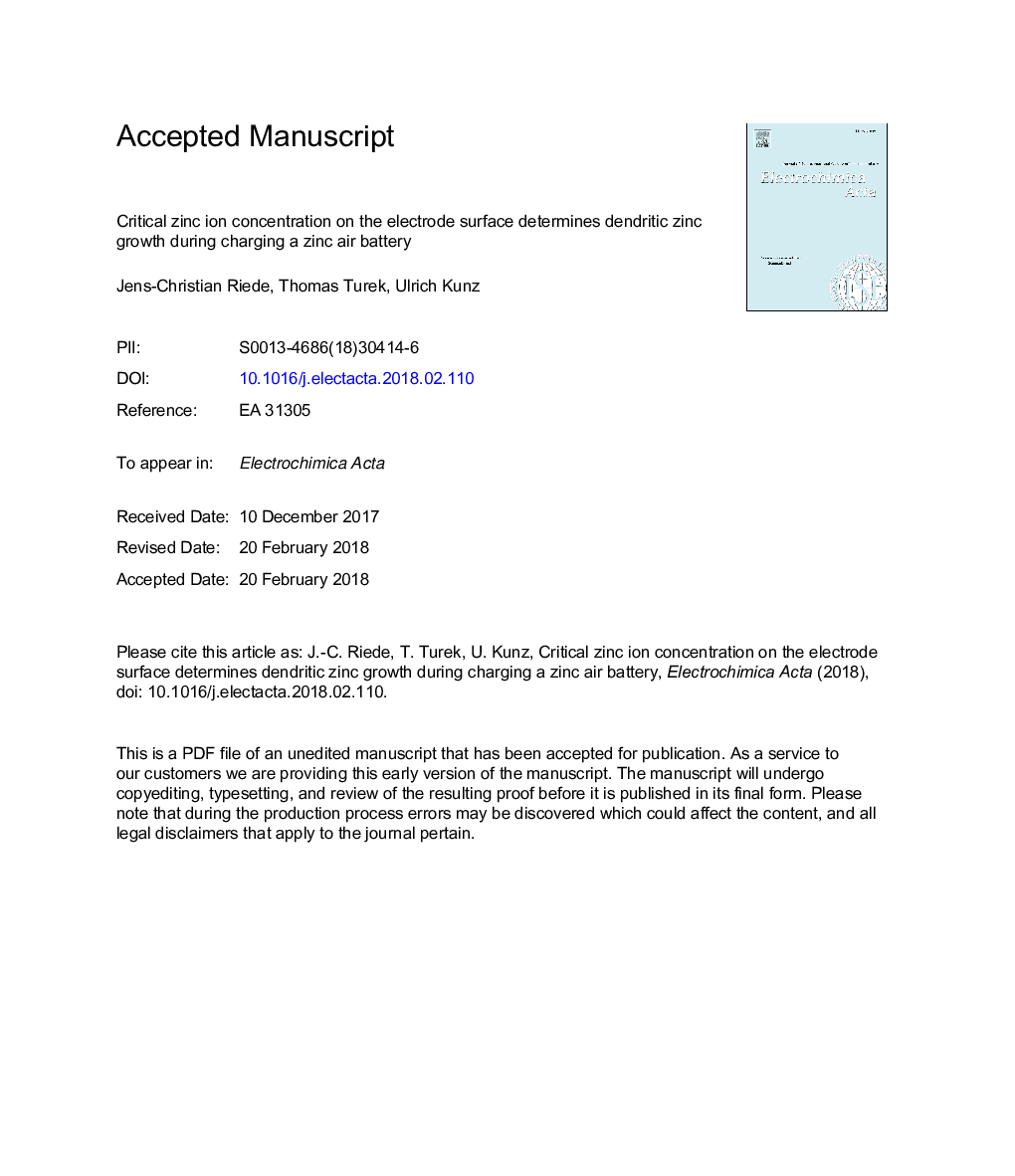| Article ID | Journal | Published Year | Pages | File Type |
|---|---|---|---|---|
| 6603582 | Electrochimica Acta | 2018 | 31 Pages |
Abstract
Zinc-air batteries have a great potential to be the next generation of secondary batteries. They exhibit a high volume and mass specific power density due to the use of oxygen, which can be taken directly from air. Compared to other anodes used in rechargeable batteries, zinc offers many advantages including low cost and environmental friendliness. Unfortunately, morphological changes occur in the zinc electrode after a few charge and discharge cycles which lead to formation of needle-shaped zinc structures (dendrites). Despite many studies about suppressing dendrites by using additives in the electrolyte, no technically feasible solution could be found until today. In this contribution the influence of zinc ion concentrations in the electrolyte at the electrode surface on the dendrite formation is investigated. It is shown that dendritic zinc crystals only occur if the surface concentration of zinc ions falls below a critical value. With the knowledge of this critical surface concentration the time before growth of dendritic zinc starts can be prolonged by pulsed deposition of zinc. Moreover, dendrite growth can be completely avoided in a flow system at an appropriate flow rate in combination with a pulsed current charging procedure. With this approach the favored boulder structures were obtained with current densities up to 80â¯mAâ¯cmâ2 and for deposition times up to 1800â¯s.
Keywords
Related Topics
Physical Sciences and Engineering
Chemical Engineering
Chemical Engineering (General)
Authors
Jens-Christian Riede, Thomas Turek, Ulrich Kunz,
